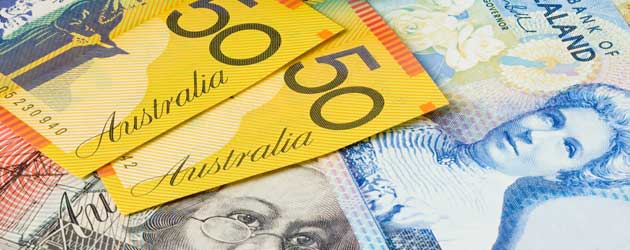
The Australian and New Zealand Dollars made gains against their US counterpart and the Japanese Yen after investor appetite was bolstered as gold recovered from its biggest drop in thirty years. Demand for riskier assets improved as a result and a rise in commodity prices benefitted the Australian and New Zealand economies.
Both currencies had posted weekly losses over the weekend as metal prices fell and as worries over Australia’s budget deficit surfaced. They both rebounded after commodity prices rose and as the US and Japans monetary stimulus programmes boosted demand for higher yielding currencies.
“The fact that we seem to have put that gold flash crash behind us is helping people’s nerves,’ supporting demand for the Aussie and Kiwi’, said Sean Callow, a senior currency strategist in Sydney. ‘The ongoing money printing by major central banks is also helping.”
The Australian Dollar could weaken over the next few weeks as concerns are growing that the Australian government will reveal that it has a multi-billion-dollar budget deficit when the national budget is announced in three-week’s time.
According to Deloitte Access Economics the estimate of a $20 billion deficit for the current financial year is too high, but it predicts the result will be a multi-billion dollar figure.
“The budget’s in trouble, we’re talking multi-billions of dollars. We’re not talking the $20 billion deficit that some people are mentioning,” it said. Another independent policy think tank the Grattan Institute is warning that of a decade of massive budget deficits if state and federal governments don’t rein in spending, and increase taxes.
The budget is due to be held on May the 14th.
The ‘Kiwi’ has followed its Australian relation upwards due to the gold rally. It also received support from data that showed that New Zealand saw more immigrants arriving into the country than those departing. Net migration in the country rose by 1,220 in March. Arrivals exceeded departures by 2,542 in the year ending March 31st, whilst departures to Australia fell to its lowest level since September 2010.

Comments are closed.